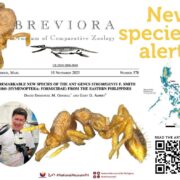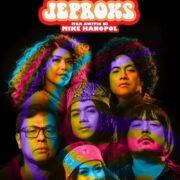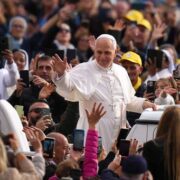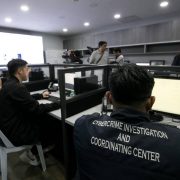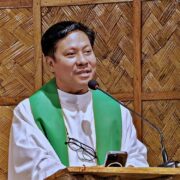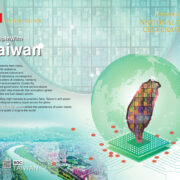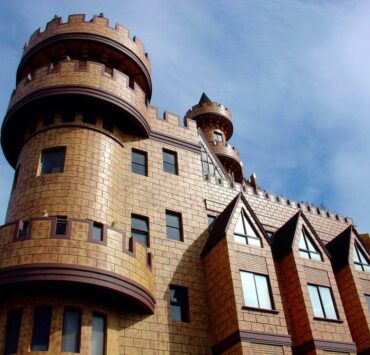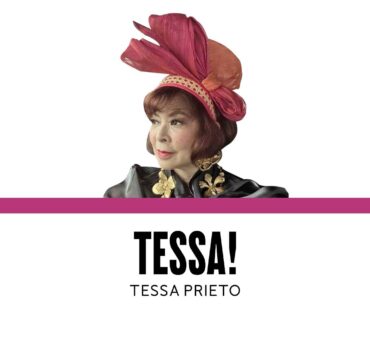Inside Jigger Cruz’s wildest, loudest, most personal show yet

“This show feels like a biography,” says contemporary artist Jigger Cruz, raising his voice over the loud din of opening night. “It’s not just paintings, but sounds, vibrations, atmospheres. I want people to feel it, not just see it.”
Cruz’s larger-than-life retrospective feels less like seeing and more like an encounter of ways of feeling, walking through sensation after sensation in the exhibit rooms of the Metropolitan Museum of Manila (The M).
Unlike many shows, the entryway skips the severe block of wall text on a stark white space. Instead, the words “Hail Holy Eyes” and “Jigger Cruz” stretch across walls painted deep purple, commanding attention in thick block font. Front and center sits a massive stone sculpture, hauled all the way from Baguio, appearing dense and immovable.
Further in, the survey continues, with enigmatic portraits from Cruz’s early days, classical forms under murky landscapes of pigments, and recent, more vibrant murals, many of which are monumental in scale.
Throughout, Cruz’s distinctive layers of pigment seem to erupt, crawl, burn, and spiral. In some corners, there is still a faint smell of oil paint.
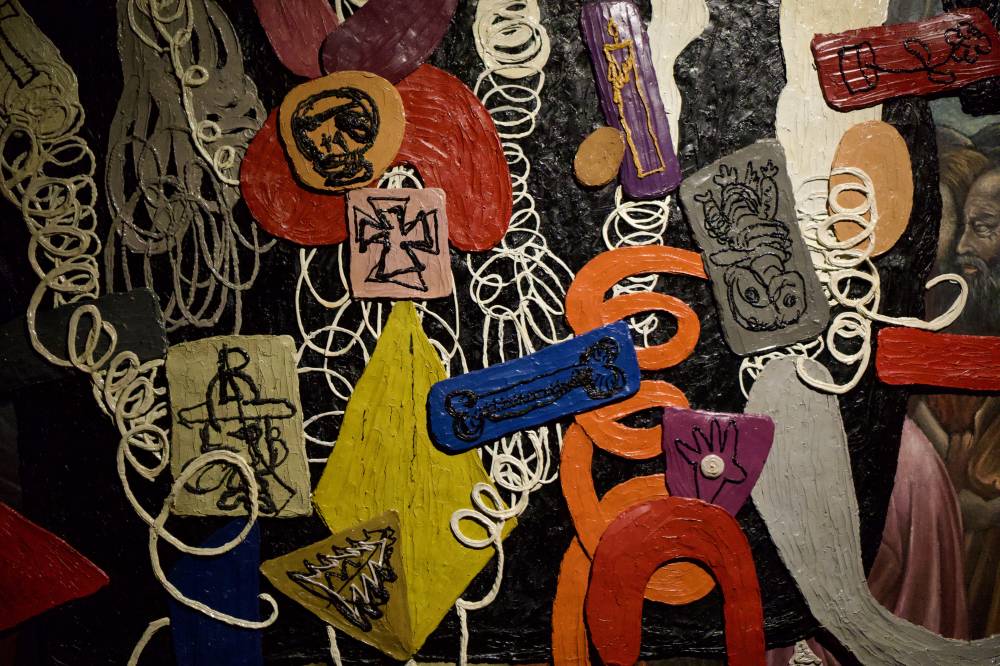
“Hail Holy Eyes”
This is “Hail Holy Eyes,” Cruz’s major mid-career survey at The M.
Running from Nov. 19 to Mar. 1, 2026, the months-long retrospective was curated by Norman Crisologo—a renowned antiques expert, as well as one of Cruz’s earliest collectors and closest friends.
At the opening, the curator shared a few emotionally charged words: “I know for a fact that a lot of the works were made because he [Cruz] wanted to give us the best show,” Crisologo paused. “And I want to give him the best because he deserves it.”
And the excellence in curation shows. Not just in the color choices of vibrantly painted walls that Crisologo is known for, but in every little detail, from the groupings of works from specific periods, to the alignment of large-scale paintings, all following perfectly leveled sight lines.
The curatorial team gathered over a hundred artworks from 2007 to present, an undeniably impressive feat that marks Cruz’s evolution across exhibit and collectors’ walls, with all their textures and mythologies.
It seems to be a personal time capsule for many. During the opening, collectors paused in front of works they knew well, some their own, others of friends. A certain editor pointed out a portrait of her son, made years ago after a conversation over a casual dinner. Dozens of longtime patrons move through the space, joined by younger collectors seeing the breadth of Cruz’s practice for the first time, eyes growing wide as their line of sight follows the layers.
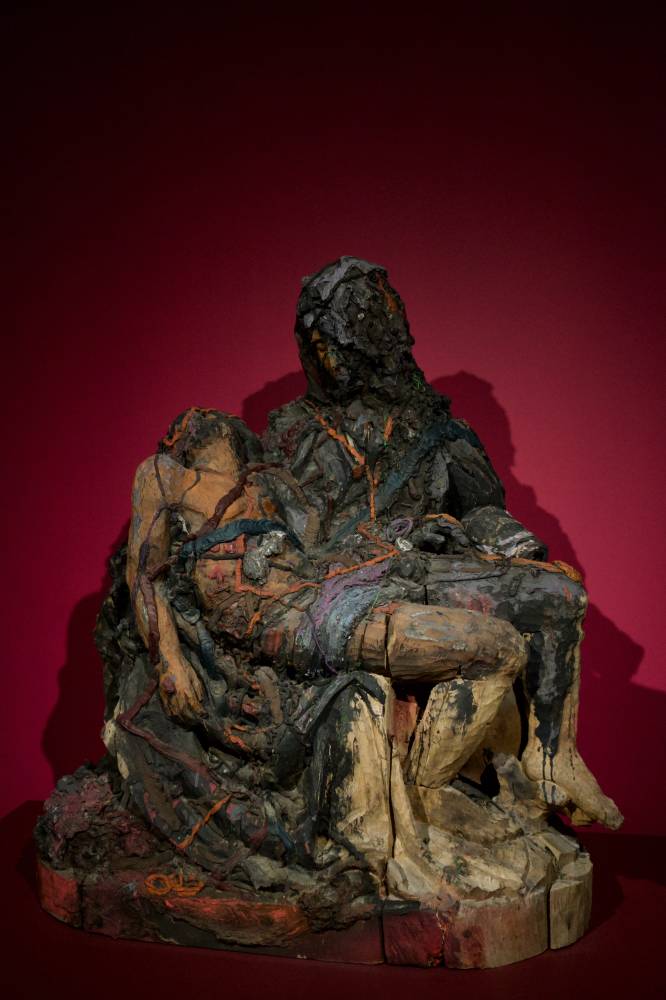
Longtime fans of Cruz may feel nostalgic, especially coming across his early style of swirling pigment, color choices shaped by the fact that Cruz is color-blind. While interspersed are newer works where he collages slabs of dried pigment, layered so densely they almost seem sculptural.
Moving through the time capsule
Turn right into the labyrinth of galleries and you’ll find sculptures and works from all parts of his nearly 20-year career. While many suggest underlying chaos in their readings, the frames are uplifted by color. Old works come into dialogue with the new, Cruz’s range on full display.
Emerging from the elevator onto the second floor, you’re greeted by paint tubes squeezed dry and accumulated onto a platform, much like a square pool of paint tubes. Floating above it is an antique table covered in hardened pigment, as if the artist’s palette has become an altar. On top sits an ornate candelabra drowning under layers of melted wax. If you’ve been to Jigger’s space or studio, you’ll be familiar with his personal stylistic choice to let all the candle wax drip and dry onto these candelabras (I’ve copied it myself).
Further in is a room with metallic awnings shaped like cathedrals, the paintings inside transmitting an altar-like sensation. Transitioning into an inner room are walls with psychedelic video works accompanied by sound landscapes. With beanbags on the floor, the room was a welcome reprieve from the intense buzz of the opening night.
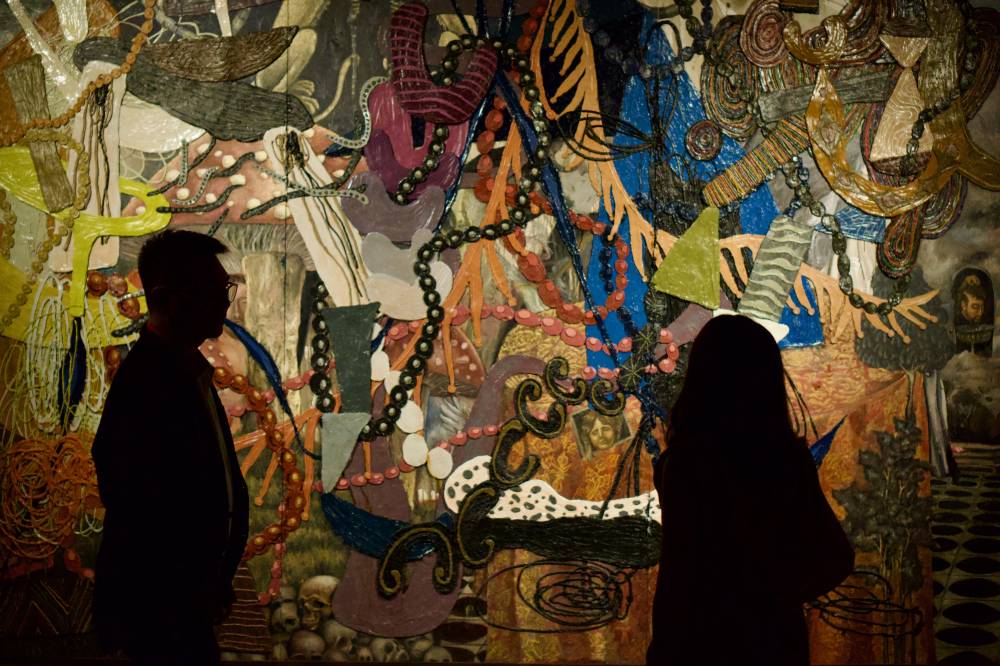
Classical European art that echoes Flemish and post-Renaissance renditions are layered with hardened paint, some of them even scorched. What makes these works so enigmatic is that beneath the impasto, the images were visible only to Cruz in his process.
His newer works are notably lighter, perhaps echoing the arrival of fatherhood. Cruz, who shares his life with his partner of nine years, Aira Hernandez, and their two young daughters, Matissa and Mahliya, seems to be opening his palette with simple lines, playful colors, and patterns blooming from sharp oranges to radiant yellows.
The sculptures throughout “Hail Holy Eyes” span from darker, obscure metal pieces to more recent whimsical forms, dramatic, show-stopping pietas, and mounds of paint that come across as archival.
Turn left from the elevator and into an expansive exhibition room washed in sour lime green. A passerby whispers that the works remind her of “stop-motion painting,” likening the layers to fossilized movement in animation. She draws parallels to Pollock, describing the difference of Pollock’s splatters to highlight Cruz’s calculated gestures, each requiring time to dry and stack.
Throughout, Cruz’s distinct ornate frames painted black make their appearance, going full circle in Cruz’s mythmaking.
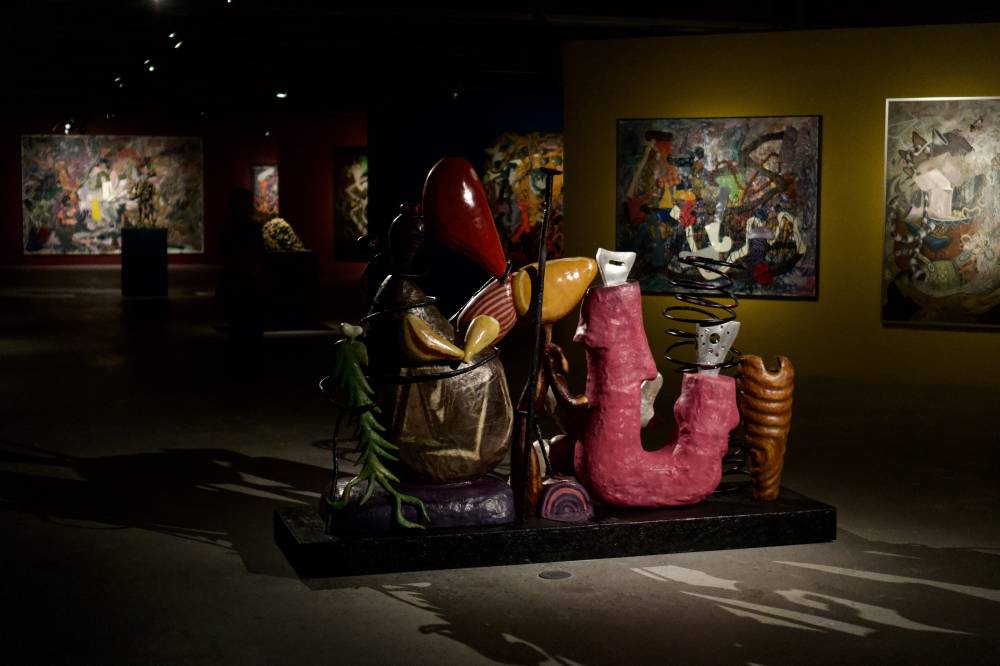
In conversation with the artist
For Cruz, this exhibition is far more than a survey. “This show feels like a biography,” he repeats. “I’m showing things I really do. Sometimes it’s not even the colors or the videos. It’s the energy you can’t see, that’s intangible, but so real.”
He describes the exhibition as deeply nostalgic, “Parang reunion with old works. I haven’t seen some of them in ten or 15 years. It’s nice to see them together with the new ones. I can see transitions, elements I didn’t know were already there, unconsciously. I’m just playing around. It’s like a huge playground for me.”
And for admirers of Cruz and his work, the rooms act like a survey of his work bridging the contemporary with classical art history, as the playground of paint moves from chaos to light, all the while maintaining that sense of materiality, mythos, and mystery, tracing nearly 20 years of the artist’s work and life.
Subflex Presents “Modified Signals” with original compositions and soundscapes of Jigger Cruz, Seething Mass (Arvin Noguera and Maia Reyes), and Pow Martinez on Nov. 22 at 6 p.m.
“Hail Holy Eyes” runs from Nov. 19 to Mar. 1, 2026, at The M (Metropolitan Museum of Manila), Mariano K. Tan Centre, 30th Street, Bonifacio Global City, Taguig


